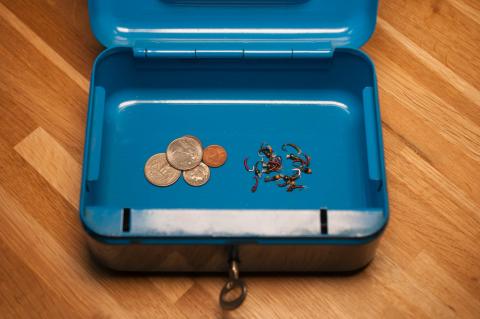Recent comments
I have done scuba diving for decades and the water temp where I live in Monterey, CA runs from 48-54 degrees throughout the year. My hands and feet would get cold until I invested in a drysuit that kept my body a lot wamer as my body was not having to warm up the 48 degree water that got inside my wetsuits by 50 degrees to my body temperature. The human body had natural mechanism to protect the core when it is too cold and that consists of shunting off the blood flow to the hands and feet and then the head. With the dry suit my core was warmer and so I had more blood flow to my hands and feet. Wearing same hood and gloves my hands and heat stayed warmer as a result of my core being warmer. Same applies to wading chest deep in cold water. Keep the core warmer and unless you are standing on ice your feet will stay much warmer.
- Log in to post comments
The mitre cutter hand shear can be bought on Amazon. Read the reviews carefully; most of these mitre cutters are used to cut soft woods like pine and basswood (linden, lime). As a woodcarver, I can tell you that I constantly hone and strop, (not sharpen unless the edge is damaged), my knives and chisels, even when carving basswood. Sharp tools keep emergency room visits at a minimum. Oak and cherry require super sharp tools; according to most mitre shear reviewers, these hand shears take Herculean hand strength to cut hardwood moulding. I would stay with a small accurate mitre box for hardwoods. Beware! You get what you pay for regarding any tool, hand or power. I clamp dowels in a vice and cut them to size using a coping saw.
- Log in to post comments
Brian
I will be heading to Arcachon, France, in early September. I have booked a boat. Any suggestions on lines and flies? Thanks!
Ben
Thank You Brian for making a tying tips video. You make some great video's and I hope you make more of the tying tips video's. And also I like your choice of music that accompanies your video's. Keep up the great work.
- Log in to post comments
I should clarify my blog, and here, the dressing is from Bates, the streamers usually are referred to as from Letcher Lambuth, and I have taken heat for referring to them being originated by Roy Patrick, though he was in on it for sure.
this is a highly successful streamer, and is the one I use for kings, the herring I use for silvers usually. At least it starts that way. I alternate depending on what is going on with the bite. I like to use embossed silver tinsel and the rib, for extra flash and to keep the salmon teeth from making hay out it. These are also very good as tube flies.
Thank-you for posting this here.
best wishes
Andrew
- Log in to post comments
Claudia,
I bought it in a shop locally (in Denmark) and I have no idea where you can get it... try a web search for "miter cutter hand shear", which is the technical English term for this tool. It will give you a ton of links.
Martin
I need to buy this wood cutting pliers,where may I order it from? Sincerely
Claudia zalfa
Beautiful streamers,love the colours,same as one of my local football teams Glasgow Rangers.Sure winners!!
- Log in to post comments
Robert,
On the surface they look the same, but Ed Story's fly uses white turkey for the body and has a back made out of peacock herl. The way the hackle stem contrasts the body to form a rib makes them look somewhat similar, but the hackle on Story's fly isn't trimmed, which is a very significant step here. Ed Story's fly is often called a "dry Woolly Worm", and looks more like that than it looks like this fly if you ask me.
Martin
- Log in to post comments
I think this product is worth looking at...
Cast Mate by TEAM FISH, INC. www.teamfishco.com
- Log in to post comments
Everybody,
I'm very sorry about placing the Rena in Sweden! My bad...
It's been fixed, and the Rena is back in Norway.
Martin
- Log in to post comments
Hei Martin,
The Rena is an Norwegian river in Hedmark.
Best regards, Peter
- Log in to post comments
The colour scheme on this streamer compliment each other wonderfully. Love it...
- Log in to post comments
This is an excellent photo. What camera did you use for this, because it has really high clarity and depth levels.
- Log in to post comments
Darren, any way you can get Mike to give the patterns recipes? Maybe Peggy can help us out?
- Log in to post comments
really beautiful, teacher..!
- Log in to post comments
Hans - I read your account of CDC with great interest - noting particularly the portion on understanding the properties of CDC as it closely paraphrases some American Angler articles predating your entry here by six years; articles that somehow escaped mention in your otherwise extensive literature search on the subject - right down to mention of the effects of floatant on CDC and the ability of the feather barbules to capture air bubbles - both photographically illustrated in the AA pieces.
- Log in to post comments
Milan,
good to hear you liked the article. The water in the Baltic Sea is brackish and not very salty. That's why the ides can live here. They act pretty much like trout - feeding long the shores and going up the streams to spawn. They are a great challenge and a beautiful fish.
Kasper Mühlbach
- Log in to post comments

